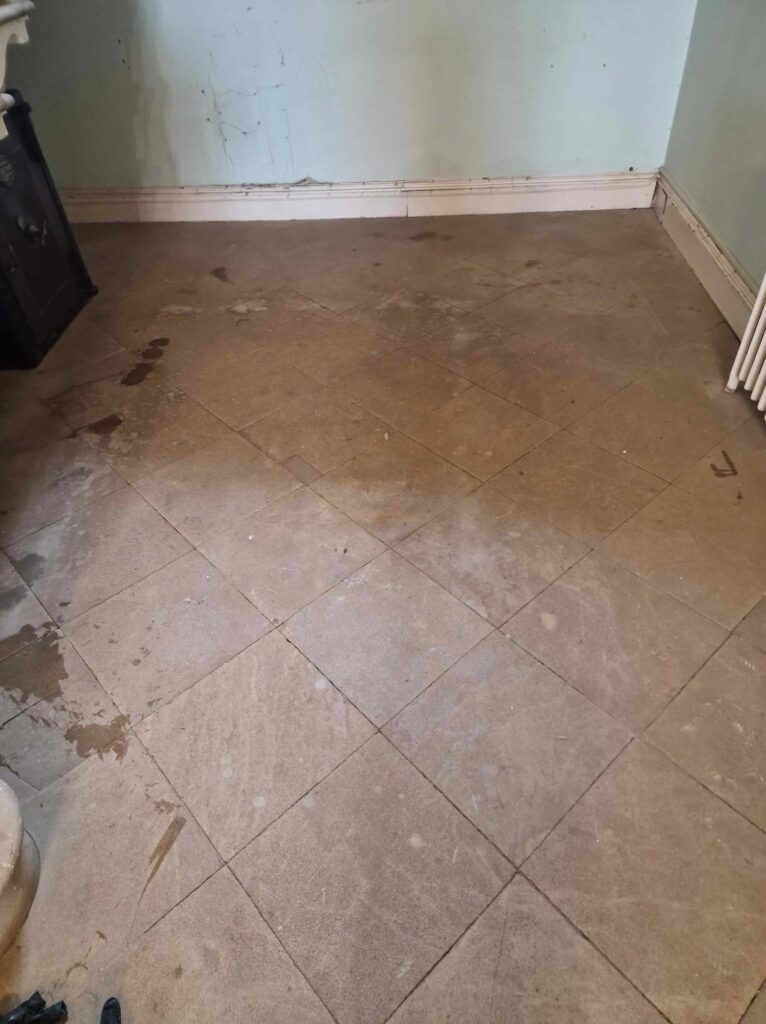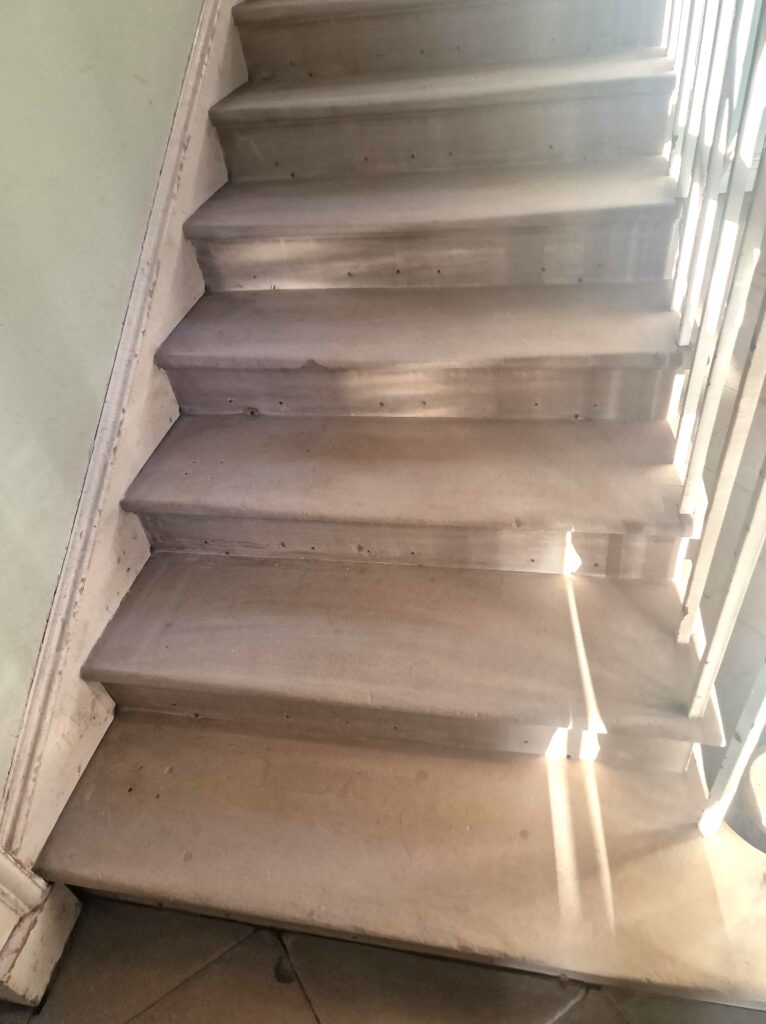Earlier this year I completed a job at an old mansion south of Gainsborough which had a unique Sandstone staircase and flooring. The home had been in the family for generations and my client was in the process of having it renovated. My involvement related to the Sandstone hallway and staircase which needed deep cleaning and sealing.

I visited the property first to survey the stone and it was clear it hadn’t been cleaned in decades so there was quite a bit to do. As an added problem there were old strips of adhesive on the steps that had been used to secure a stair carpet and the adhesive had absorbed into the stone staining it.

Deep Cleaning a Sandstone Hallway and Staircase
My first task was to deep clean everything and my choice of product for this was Tile Doctor Remove and Go. This is a strong alkaline cleaner and coatings remover that’s designed for stripping off sealers and other contaminates such as adhesives; in this case however I suspect any sealer may have been work off years ago. I worked in sections and used a strong dilution decanted into a sprayer and applied to the stone; it was then left to soak in for a good ten to fifteen minutes before being scrubbed in.
For the sandstone floor tiles I used a 17-inch black scrubbing pad fitted to a weighted rotary floor buffer, the extra weight increases surface traction on the stone; I use the machine with a plastic skirt around the pad to minimise splashing. Once done the soiled solution was rinsed away with water and extracted with a wet vacuum. This process was very effective, and you can clearly see the difference in the photographs between the dirty and clean floor.
 |
 |
The large buffer machine wasn’t a practical choice for scrubbing the stone staircase so to tackle that, I used back 6-inch scrubbing pads fitted to a hand buffer. It is a slower process but combined with more Tile Doctor Remove and Go it got the job done.
After rising and extracting I inspected the staircase and it was clear that the marks from the adhesive strips would need more attention to completely remove the staining. I turned to another Tile Doctor product for this called Nanotech HBU Remover, HBU stands for Heavy Build-up and it is a real problem solver for issues like this. Again, the product was left to soak in for ten minutes and then scrubbed in using a similar process as before using the handheld machine. I had to do this a few times until we were happy with the results. I then used coarse 200 and 400 grit diamond burnishing pads to even out the surface.

Sealing a Sandstone Tiled Hallway and Staircase Floor
After a final rinse and extraction, the floor was left to dry out completely for a few days; a lot of water is used in the cleaning process and the stone needs to be dry before applying the sealer.
On my return I took moisture readings with a damp meter to confirm the floor had dried and then started applying the sealer which for this floor I used Tile Doctor Ultra-Seal. This is an impregnating sealer that soaks into the pores of the stone adding protecting it from within, it leaves the stone with a natural finish and is almost undetectable. This product is also fully breathable which is an important point when dealing with old floors that don’t have the benefit of a damp proof membrane.

The client was amazed by the transformation and said she had never seen the stone so much lighter and clean. For aftercare I recommended Tile Doctor Neutral Tile Cleaner which is a gentle but effective cleaning product that is safe to use on sealed stone.

Source: Sandstone Cleaning and Restoration Service in Gainsborough Lincolnshire
Serving North Lincolnshire including Gainsborough, William Bailey is your local Stone, Tile and Grout maintenance expert. Additionally he is an agent of Tile Doctor, the largest professional Tile, Stone and Grout restorative cleaning network in the UK. Tile Doctor has developed products and techniques to handle a multitude of issues surrounding tile, stone and grout, interior, exterior, domestic or commercial.